Sexuality and Gender

There are many ways that humans are different. Each person is unique (one of a kind) and very special. Some of us are shy and some find it easy to make friends. We have different ways of showing our feelings and we enjoy different activities.
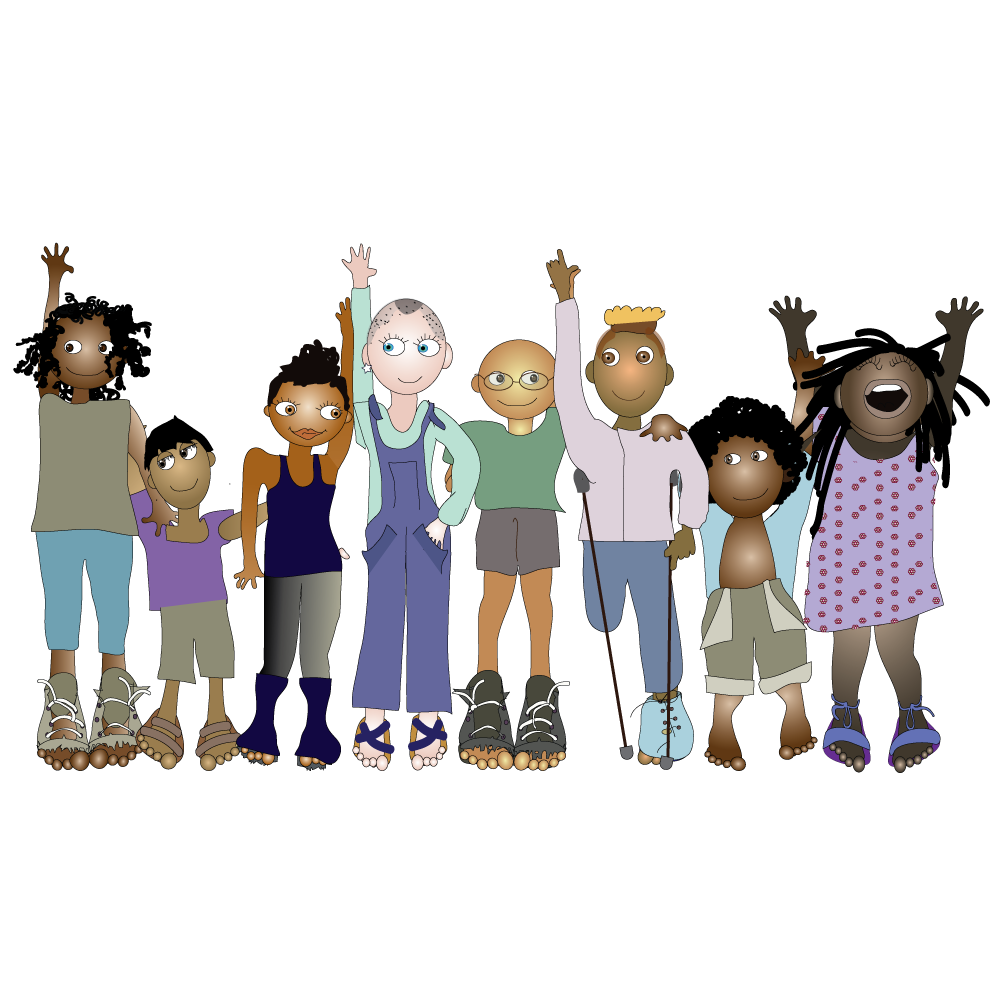
We express ourselves in various ways and feel attraction and affection towards different people. The following pages give more information about these differences and what it means to have love, friendship and respect for people who differ from us.
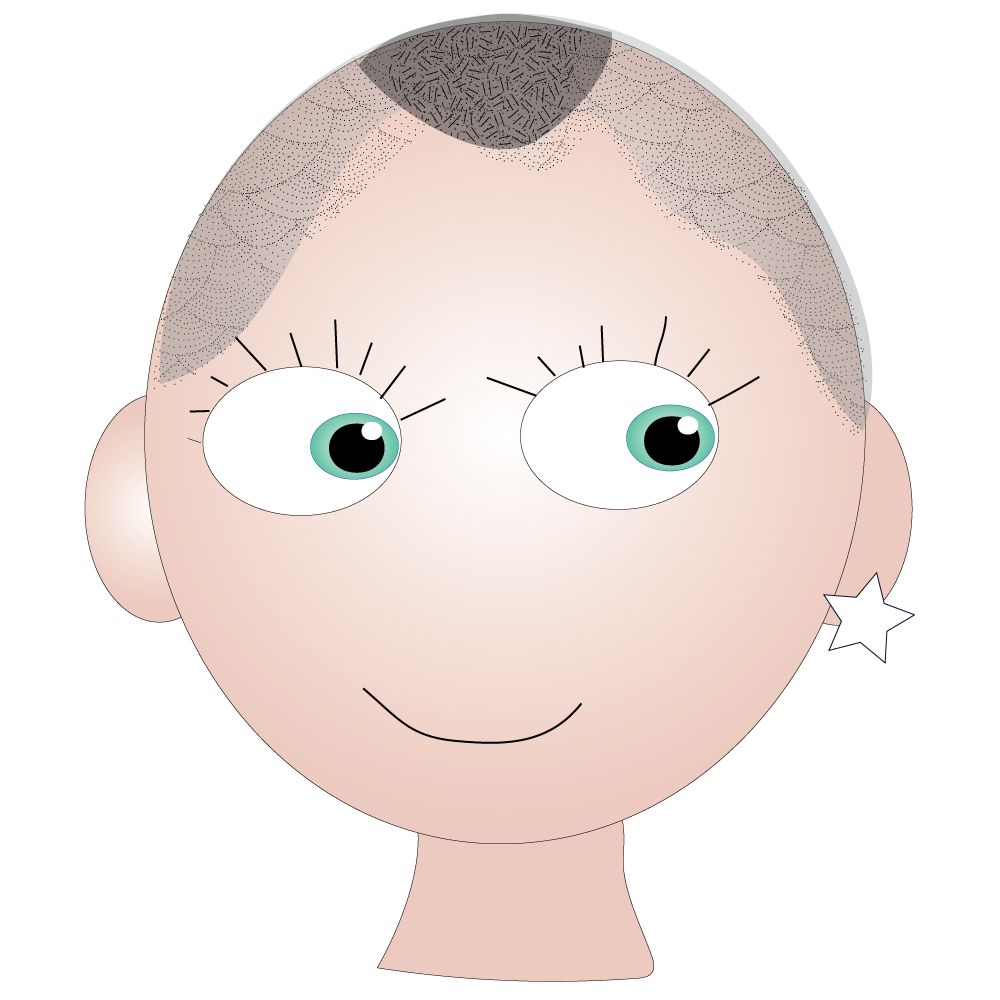
Gender roles are how we are expected to act, speak, dress and behave based on our assigned sex.
For example, girls and women are generally expected to dress in a “feminine way”, to be polite, obedient and nurturing.
Boys and men are generally expected to be strong and to be in charge.
Different societies tend to have fixed ideas about what girls and boys should and shouldn’t do even though they might have the same abilities, interests and feelings. Gender roles may change over time.
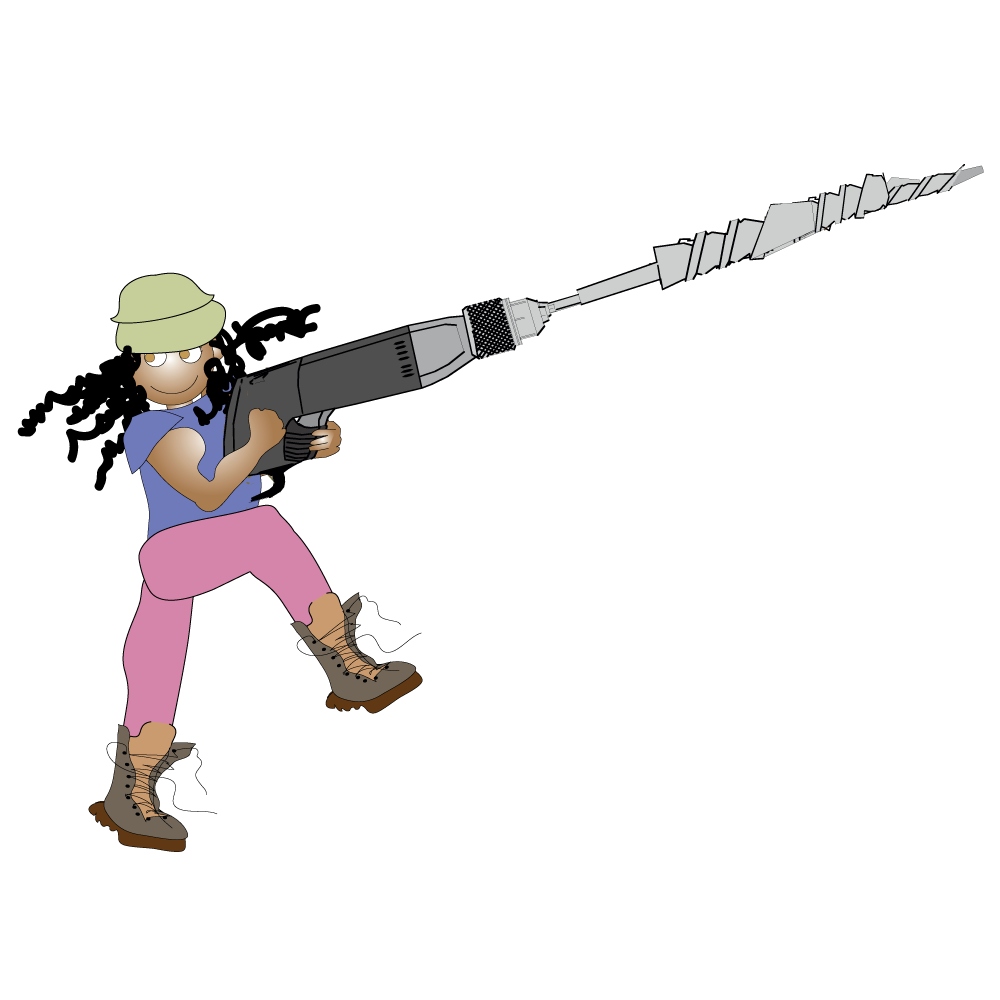

Gender identity is how people feel about being male or female. Some people feel neither male nor female. Some people feel like a boyish girl, or a girlish boy. They may choose to be known as a ‘genderqueer’ or ‘gender fluid’ or other words too. None of these terms mean exactly the same thing – but all speak to an experience of gender that is not simply male or female.
Gender identity is how we feel inside and how we express our gender through clothing, behaviour and personal appearance.
It’s a feeling that begins very early in life. Feelings about gender identity begin as early as age two or three.
Gender identity isn’t about who we are attracted to, but about who we ARE.
Some people take medication (hormones) and my have surgery to change their body so it matches their gender identity.
If someone is born with body parts that don’t match how they feel about themselves, they might be transgender.
For example, if you are born with a boy’s body but in your heart you feel that you are a girl, then you might be a transgender girl. You might want to dress differently and change your given name. This is gender expression.
If you feel comfortable that your body parts match with your identity, you are a cisgender person.
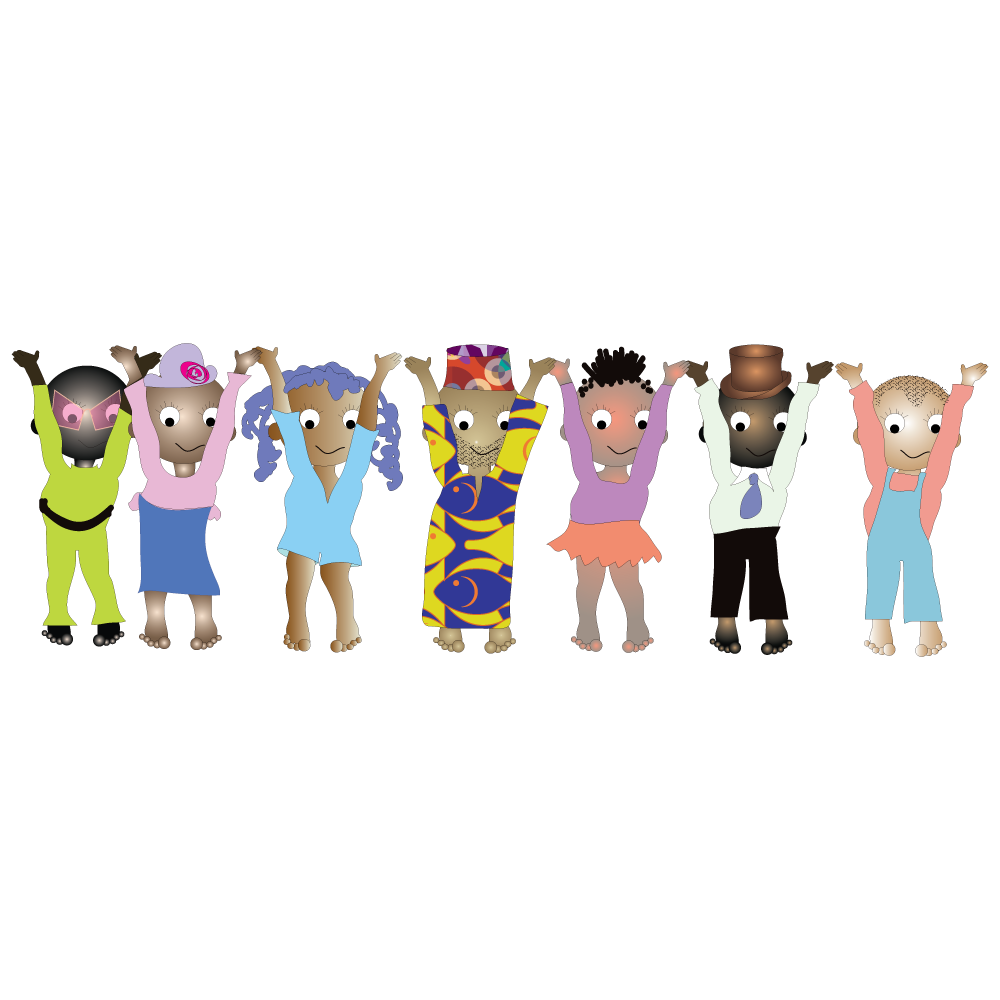
Gender expression is the way in which we choose how to show our gender.
We can use this picture to help us understand some of these words better
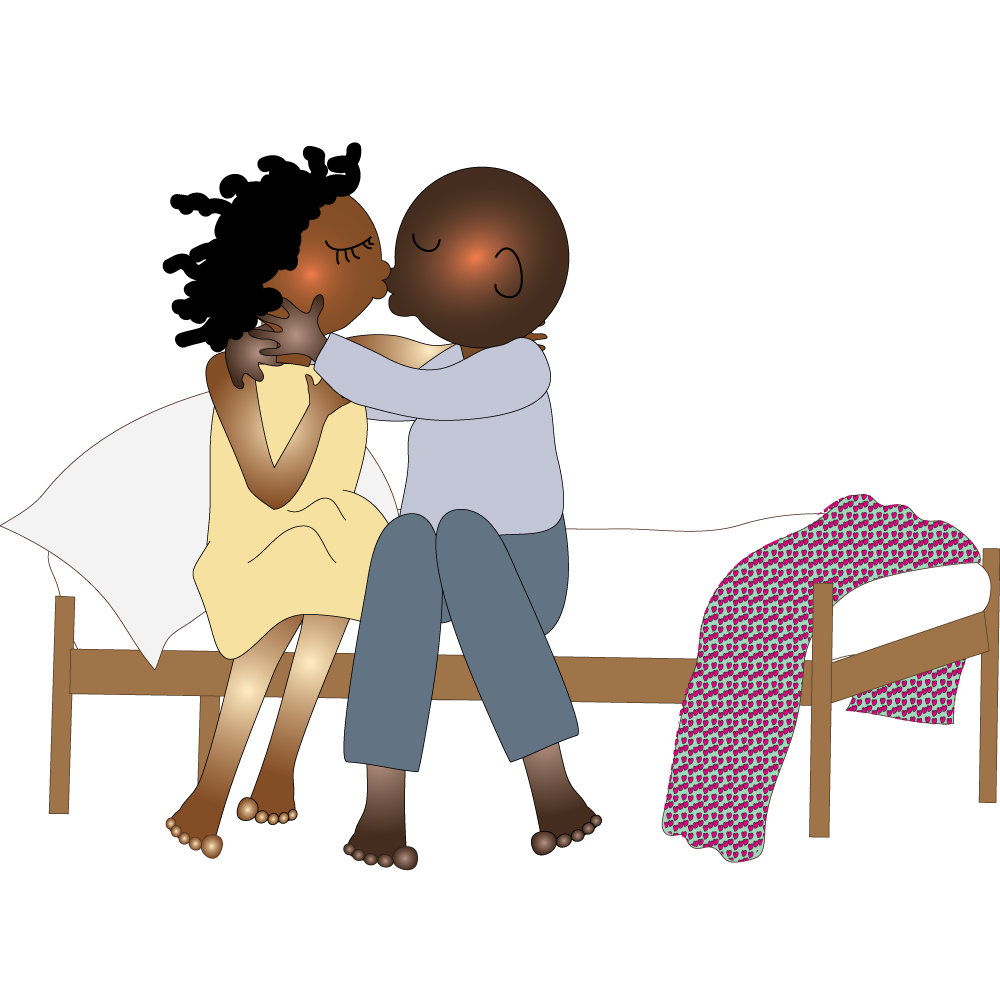
Sexual behaviour in adolescence usually starts with hugging and holding hands, leading to kissing and touching, followed by other types of intimate behaviour.
Sexual intercourse is a sex act that involves penile penetration of a person's vagina, anus or mouth by another person for sexual gratification (pleasure).
Sex also refers to different sexual activities that are not just penile/vaginal intercourse. Sexual pleasure can come from thoughts, talking and touching. It happens when your feelings and your body are aroused. When the pleasure gets intense, it can lead to an orgasm. For boys, the orgasm is followed by ejaculation.

Sex also means biological sex
Your sex is like a label. It is what goes on your birth certificate after you are born, saying that you are male or female. This is usually based upon what your genitals look like. So, a person’s biological sex can be female, male or intersex. We are not simply males or females.
- If you are born with obviously female genitals (vulva/vagina) you will be classified as female.
- If you are born with clearly male genitals (penis and testes) you will be classified as male.
- Some babies are born with genitals that are not typical so they may be classified as intersex, but they will still be given a boy label or a girl label.
Intersex features may only become noticeable around the time of puberty.
When a baby is born, it is usually obvious that it is a girl or a boy. Sometimes it is not clear because the baby’s body does not look typically male or typically female. In this case, we say that the baby is intersex.
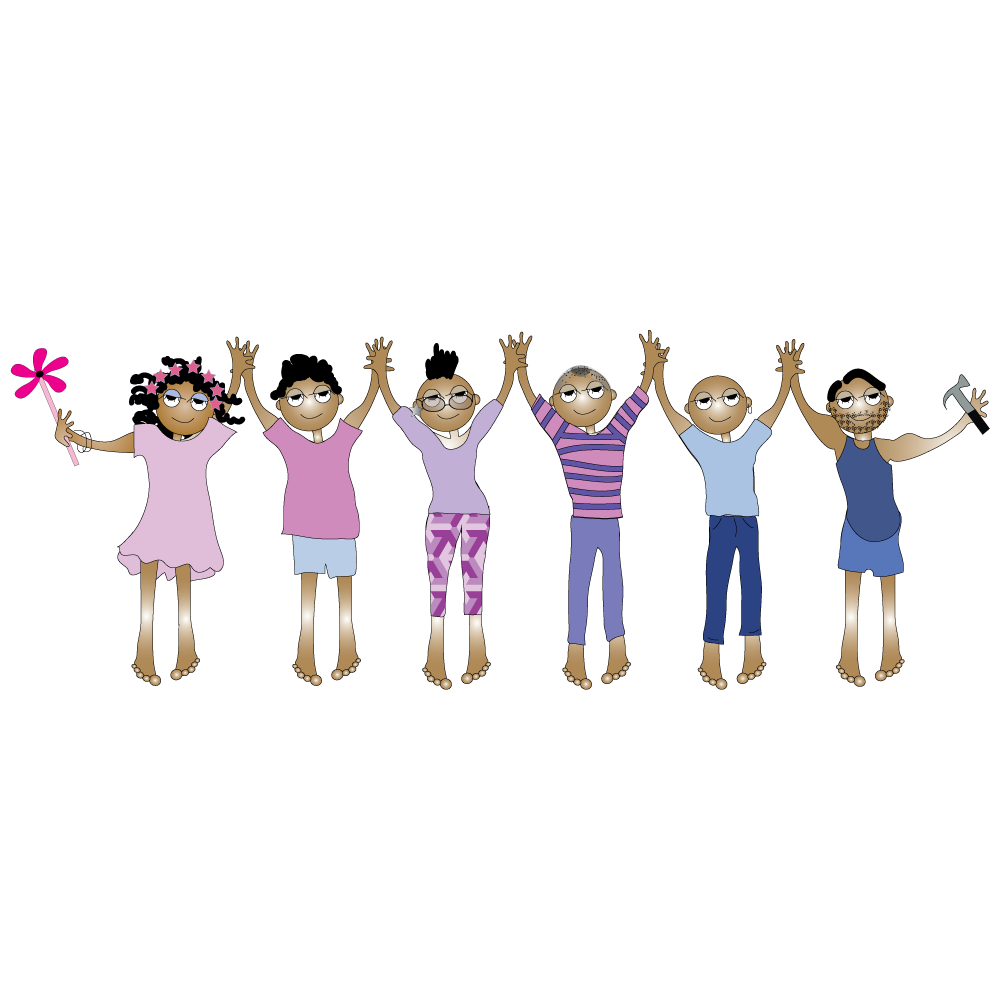
An intersex person may identify as male or female, just like someone who is born male or female. We see that nature does not decide where ‘male’ ends and intersex begins, and where intersex ends and becomes female. It’s humans who decide.
Note – this is a very simplified version of a very complex subject.
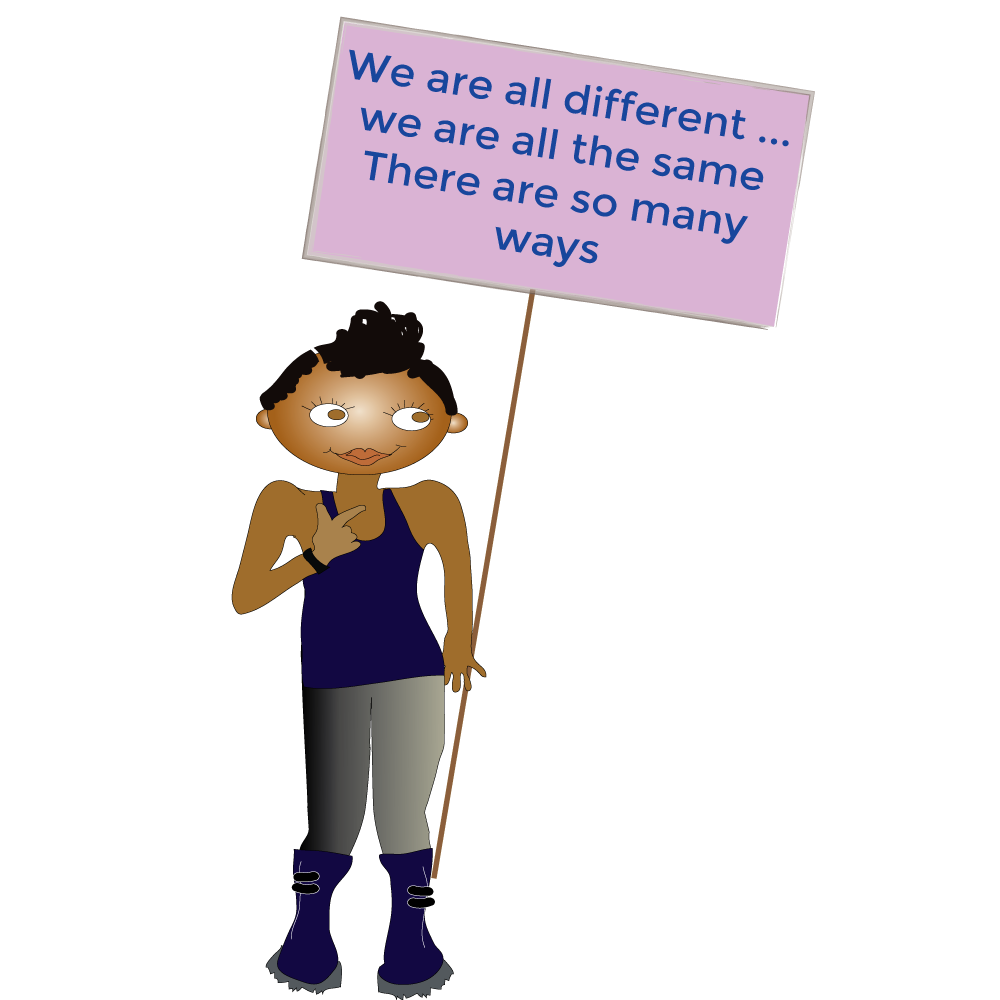
Sexual orientation is about who were attracted to and might want to have a romantic, physical (of the body) and emotional (of the heart) relationship with.
Sexual orientation is about feelings. We don’t choose our feelings, but we can choose what to do about them.
- Being attracted to someone who is a different gender – girls who are attracted to boys, or boys who are attracted to girls is often called being ‘straight’ or ‘heterosexual’.
- Being attracted to people of the same gender is often called being ‘gay’ or ‘homosexual’.
- Gay girls may prefer the term ‘lesbian’.
- Being attracted to both boys and girls, is often called being ‘bisexual.
- Being attracted to people across many different gender identities (male, female, transgender, gender queer, intersex etc) may be called ‘pansexual’ or ‘queer’.
- If someone is unsure about their sexual orientation, they may call themselves ‘questioning’ or ‘curious’.
- If a person doesn’t experience any sexual attraction to anyone, they may call themselves ‘asexual’.
We have talked about:
- Biological sex – female or male or intersex
- Gender identity – how you feel inside
- Gender expression – your appearance and how you behave
- Transgender or intersex people’s sexual orientation may be any of the above.
Attraction is another thing that lets you see how we are all different. This is your sexual orientation.
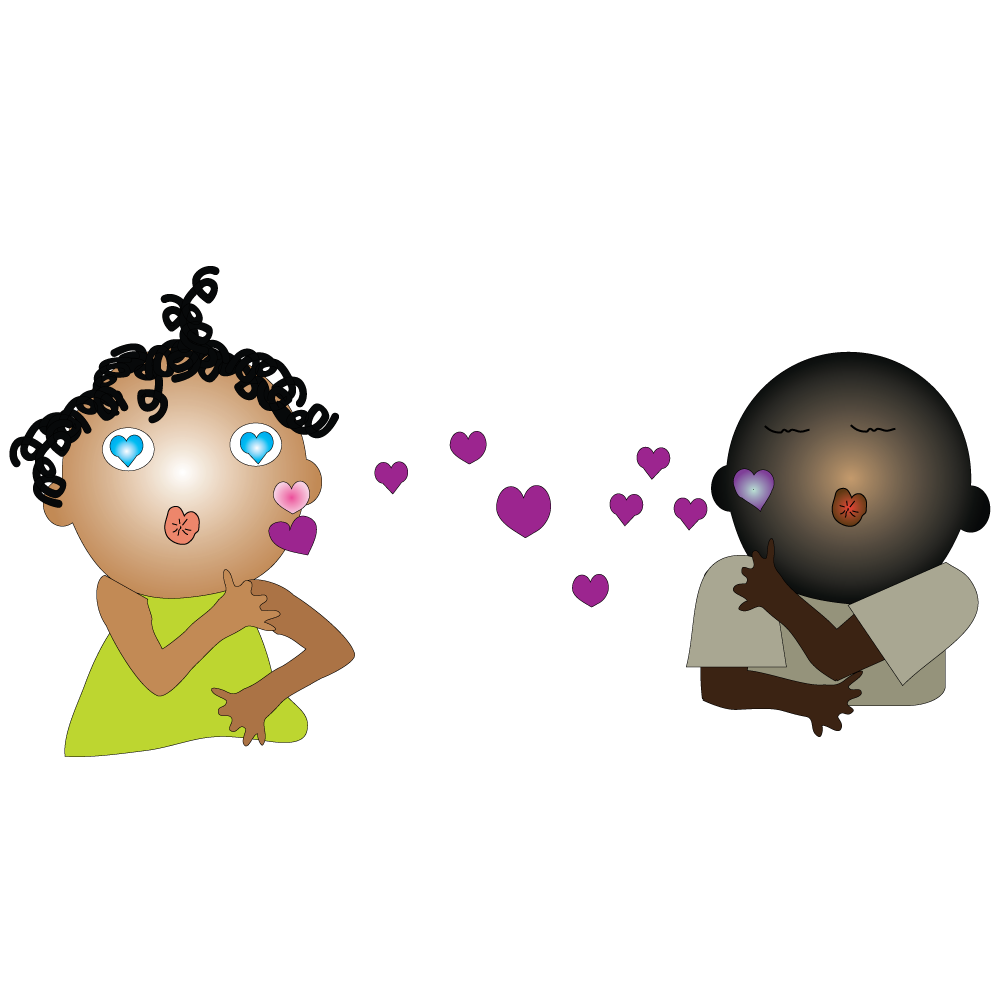
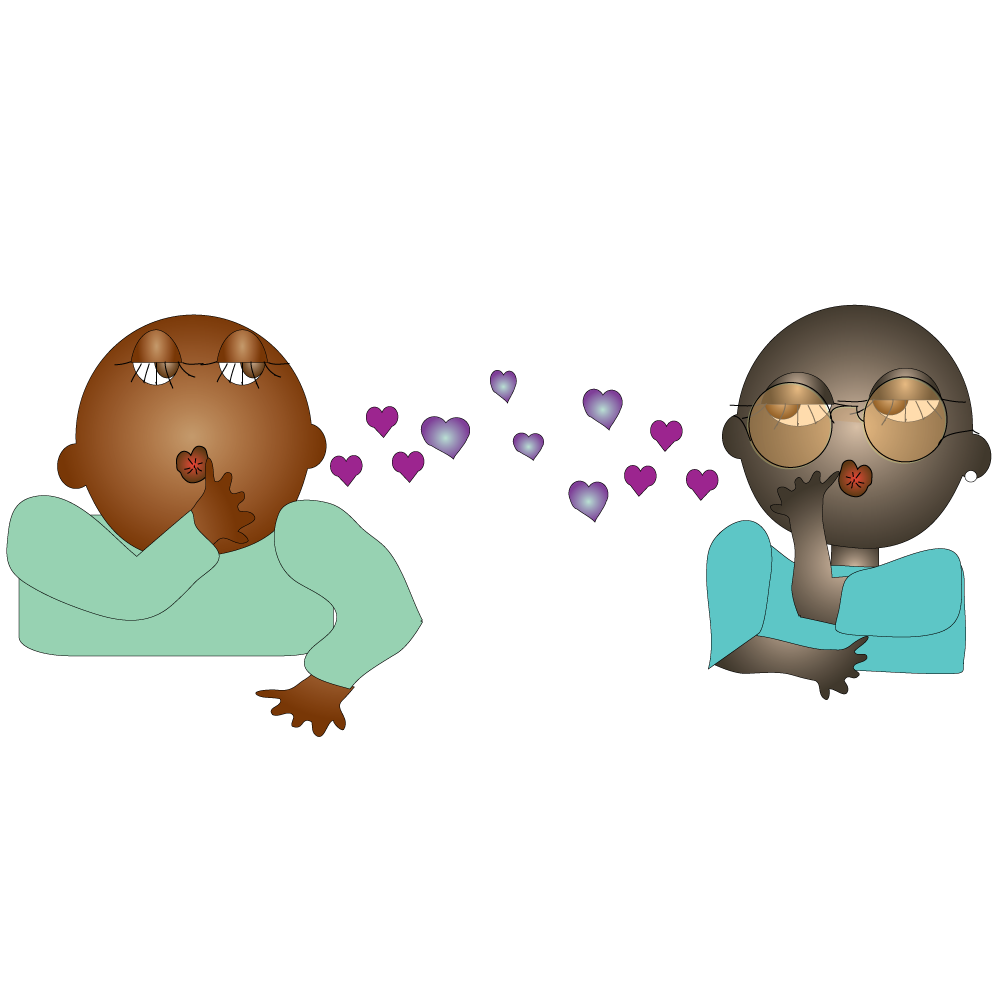
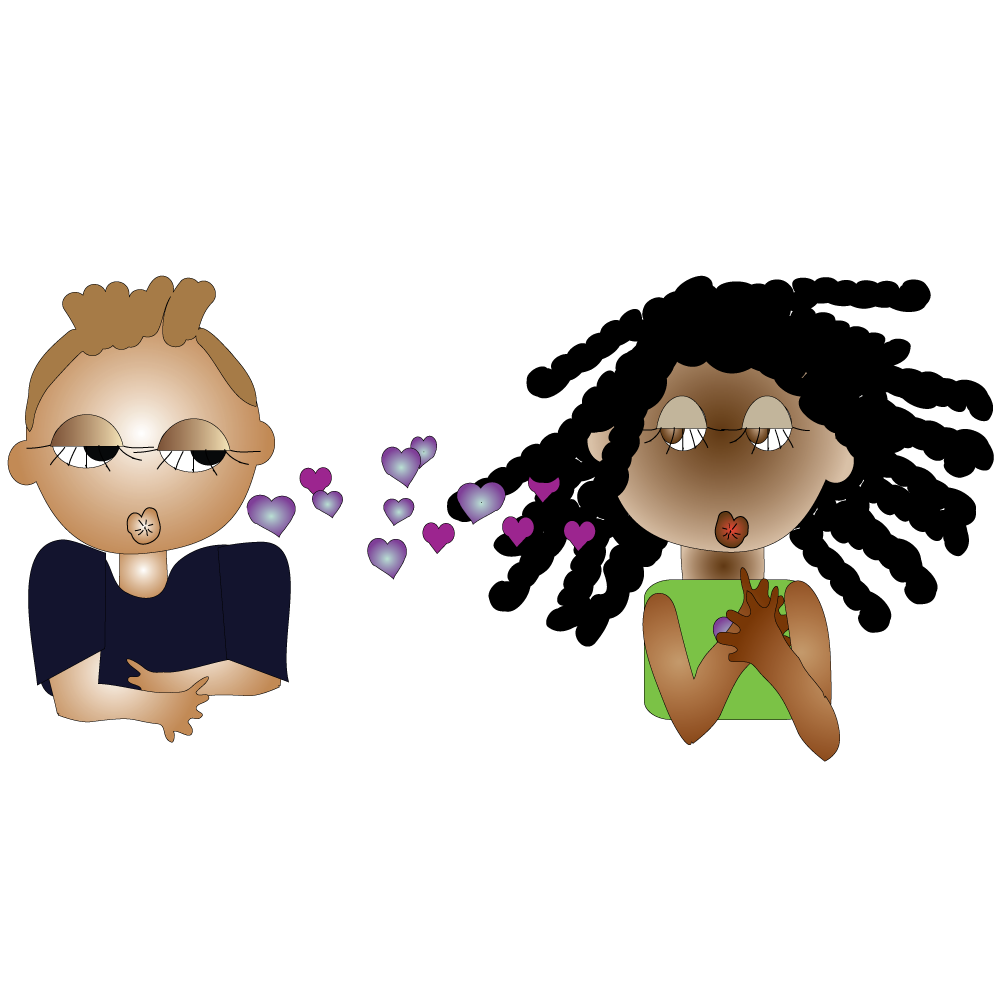
Being respectful of our differences
People who identify as LGBTQIA+ can experience various challenges because of how others respond to their sexual orientation or gender identity/ expression. Youth who are questioning their sexual orientation or gender identity, or who may be perceived as LGBTQIA+ or gender variant by others, might experience bullying and harassment.
Remember, there are lots of people who don’t want to be labelled. Identity is a personal decision. Some people may feel that none of the common labels are right for them. We’re all different and there is place in the world enough for everyone.
Sexual orientation and identity can remain the same throughout life, or can change depending on feelings of attraction, partners, or who a person is sexually active with. This is normal. A label can change as a person changes; it does not mean that they are confused. This is called being gender fluid.
The meaning of different terms in the acronym LGBTQIA+ are:
- A lesbian is a woman who finds women attractive.
- A gay man finds men attractive.
- A bisexual person is attracted to their gender and other gender identities.
- A transgender person has a gender identity which does not align with the gender assigned to them at birth, based on their biological sex.
- A queer person’s gender identity is outside the strict binary of male and female. They may exhibit both traditionally male and female qualities, or neither.
- Intersex is someone who is not born with XX or XY chromosomes. As a result, the individuals possess both masculine and feminine anatomy.
- Asexual is someone who experiences little or no sexual attraction.
- The + sign indicates all types of gender and sexual orientations that exist but cannot be defined yet.
EZOCANSI NOBULILI

Ziningi izindlela abantu abahlukene ngazo. Umuntu ngamunye uhlukile (akekho omunye ofana naye) futhi ungokhethekile kakhulu. Abanye bethu banamahloni kanti abanye bakuthola kulula ukwenza abangani. Sinezindlela ezihlukene zokubonisa imizwa yethu futhi sijabulela izinto ezehlukene.

Siziveza ngezindlela ezahlukene futhi sizizwe sikhangwa futhi sinothando kubantu abahlukene. Amakhasi alandelayo anikeza ulwazi olwengeziwe mayelana nalokhu kwehluka nokuthi kusho ukuthini ukuba nothando, ubungani nokuhlonipha abantu abahlukile kithi.

Imisebenzi ngokobulili yindlela okulindeleke ukuba senze ngayo, sikhulume, sigqoke futhi siziphathe ngayo ngokusekelwe ebulilini esazalwa nabo.
Isibonelo, amantombazane nabesifazane ngokujwayeyelekile balindeleke ukuba bagqoke ngendlela yowesifazane, babe nesizotha, balalele futhi banakekele.
Abafana namadoda ngokujwayelekile kulindeleke ukuba babe namandla futhi balawule.
Imiphakathi eyehlukene ijwayele ukuba nemibono engaguquki mayelana nalokho intombazane nomfana okufanele bakwenze nokungafanele bakwenze nakuba bengase babe namakhono afanayo, izinto abazithandayo kanye nemizwa efanayo. Imisebenzi ngokobulili ingashintsha ngokuhamba kwesikhathi.

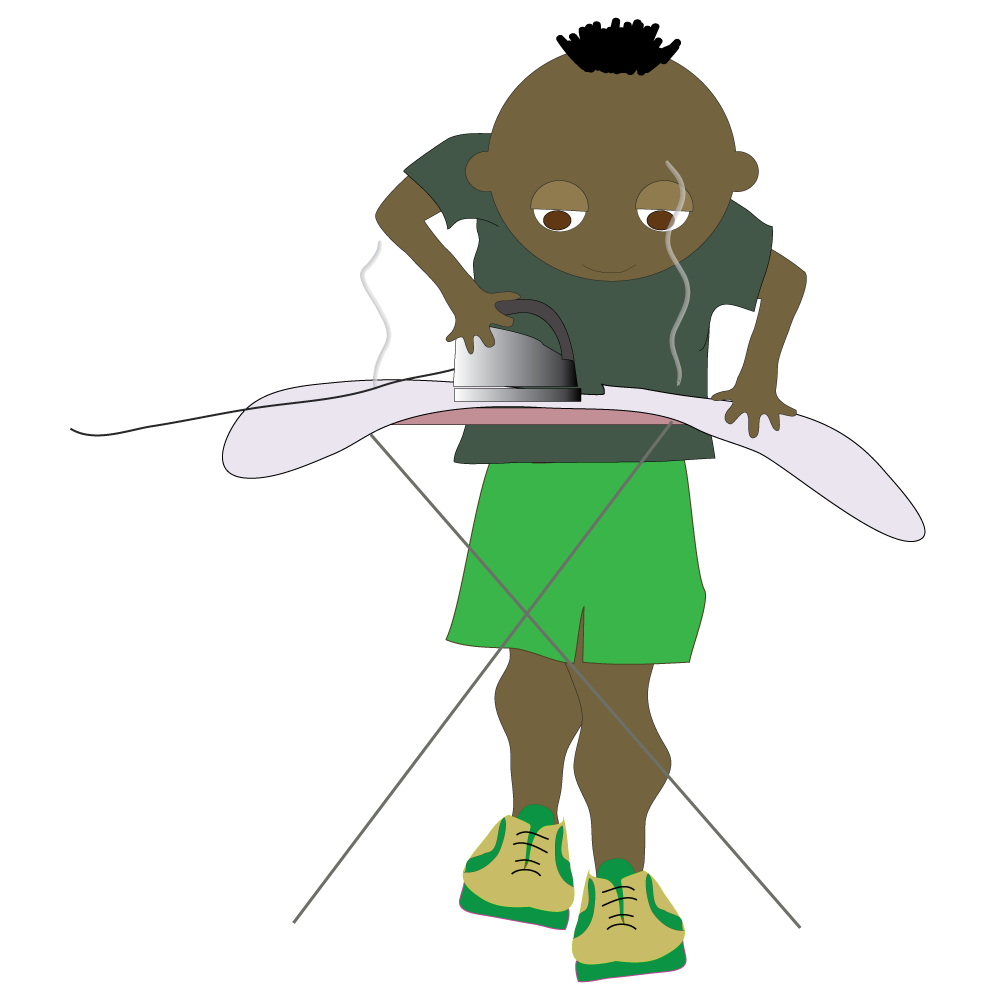
Ukuzazi ngokobulili yindlela umuntu azizwa ngayo ngokuba ngowesilisa noma ngowesifazane. Omunye umuntu uzizwa engeyena owesilisa noma owesifazane. Omunye umuntu uzizwa eyintombazane nakuba ewumfana, noma engumfana azizwe eyintombazane. Angase akhethe ukwaziwa ngokuthi yi“genderqueer” noma yi“gender fluid” noma amanye nje amagama. Alikho kula magama elisho into efanayo ncamashi – kodwa wonke akhuluma ngolwazi lobulili okungebona nje bowesilisa noma bowesifazane.
Ukuzazi ngokobulili yindlela umuntu azizwa ngayo ngaphakathi nendlela aziveza ngayo ubulili bakhe ngezingubo, ukuziphatha nokubukeka kwakhe.
Kungumuzwa oqala umuntu esemncane. Imizwa mayelana nokuzazi ngobulili iqala lapho uneminyaka emibili noma emithathu. Ukuzazi ngobulili abukho mayelana nokuthi sikhangwa ngubani, kodwa kumayena nokuthi SINGOBANI.
Abanye abantu baphuza imithi (“homones”) futhi bangase bahlinzwe ukuze kushintshwe imizimba yabo, ukuze ifanelane nokuzazi ngobulili babo.
Uma umuntu ezalwa enezitho zomzimba ezingahambisani nendlela azizwa ngayo, kungenzeka ukuthi uyi-transgender.
Isibonelo, uma uzalwe unomzimba womfana kodwa enhliziyweni yakho, uzizwa uyintombazane, kungenzeka ukuthi uyintombazane eyi-transgender. Ungase ufune ukugqoka ngendlela ehlukile futhi ushintshe igama lakho oliqanjiwe. Lokhu ukuvezwa kobulili.
Uma uzizwa ukhululekile ekutheni izingxenye zomzimba wakho zihambelana nokuzazi kwakho, ungumuntu we-cisgender.

Ukuziveza ngokobulili yindlela esikhetha ngayo ukuthi singabonisa kanjani ubulili bethu.
Singasebenzisa lesi sithombe ukwelekelela ekutheni siqonde la magama kangcono:


Ukuziphatha ngokocansi ebusheni kujwayeleke ukuba kuqale ngokugonana nokubambana ngezandla, okuholela ekuqabuleni nasekuthinteni, kulandelwe ezinye izinhlobo zokuziphatha ngokusondelana.
Ukuya ocansini kuyisenzo socansi esibandakanya ukungena kwesitho sangasese sowesilisa esithweni sangasese somuntu wesifazane noma emlonyeni womunye umuntu ukuze aneliseke ngokocansi (ubumnandi).
Ucansi luphinde lusho izenzo zocansi ezahlukahlukene okungekhona nje ukuya ocansini /ngesitho sangasese sowesifazane. Kwenzeka lapho imizwa yakho nomzimba wakho kuvuka. Lapho injabulo iba ngamandla, ingaholela kuvuthondaba kwezocansi (orgasm). Kubafana uvuthondaba kwezocansi lulandelwa ukuchitha noma ukuphuma kwesidoda.
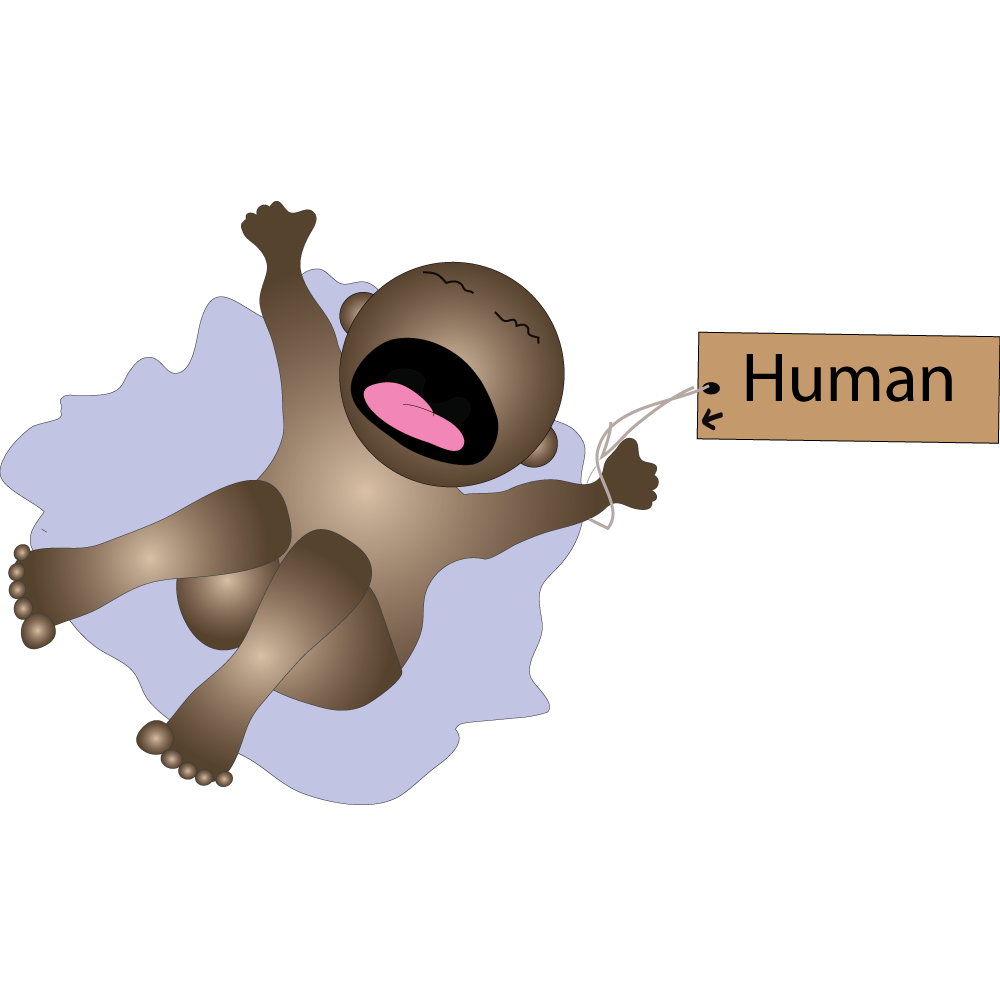
Ubulili lubuye busho ubulili ngokwemvelo.
Ubulili bakho bufana nelebula. Ubulili bakho buyilokho okubhalwa esitifiketini sakho sokuzalwa emva kokuzalwa kwakho, okusho ukuthi ungowesilisa noma owesifazane. Lokhu ngokujwayelekile kweyama ekutheni izitho zakho zangasese zibukeka kanjani. Ngakho-ke ubulili bomuntu bemvelo bungaba obesifazane, obesilisa noma ubulilimbili (intersex). Asibona kalula nje abesilisa noma abesifazane.
- Ukuzalwa unezitho zangasese ezibonakala ngokusobala ukuthi ungowesifazane (imomozi/ umgudu wesitho sangasese ivajina) uzohlukaniswa njengowesifazane.
- Uma uzalwa unezitho ezibonakala ngokusobala ukuthi ungowesilisa (ipipi kanye namankwahla) uzohlukaniswa njengowesilisa.
- Ezinye izingane zizalwa zinezitho zangasese ezingezona ezijwayelekile ngakho-ke zingase zichazwe njengobulili obuhlukile, kodwa zisazonikewa ilebula lomfana noma ilebula lentombazane.
Ubunjalo bobulilimbili (intersex) bubonakala kahle ngokusobala ngesikhathi sokuthomba.
Lapho ingane izalwa, ngokujwayelekile kuba sobala ukuthi iyintombazane noma ingumfana. Kwesinye isikhathi akucaci ngoba umzimba wengane awubukeki ungowesilisa noma ungowesifazane. Kulokhu, sithi ingane ibulilimbili.

Umuntu obulilimbili angase achazwe njengomuntu ongowesilisa noma ongowesifazane, njengalowo ozalwe engowesilisa noma engowesifazane. Siyabona ukuthi imvelo ayinqumi ukuthi ukuba ngowesilisa ophelele buphela kuphi nobulilimbili buqala kuphi, nokuthi ubulilimbili buphela kuphi, bese buba owesifazane. Ngumuntu onqumayo.
Qaphela – lokhu kuyindlela echaza kalula isihloko esingelula.

Ukuziveza ngokobulili kumayelana nokuthi sikhangwa ngobani esingahle sifise ukuba nobudlelwane obufudumele, bomzimba nobomoya (benhliziyo) nabo.
Ukuziveza ngokobulili kumayelana nemizwa. Asizikhetheli imizwa, kodwa singakhetha ukuthi senzani ngayo.
- Ukukhangwa ngumuntu wobulili obehlukile – amantombazane akhangwa ngabafana, noma abafana abakhangwa ngamantombazane, lokhu ngokujwayelekile kubizwa ngokuthi ungo‘qondile’ noma ‘heterosexual’.
- Ukukhangwa ngumuntu onobulili obufana nobakho kubizwa ngokuthi ubungqingili.
- Amantombazana athanda amanye amantombazane wona athanda ukubizwa ngokuthi ngama ‘lesbian’.
- Okhangwa yibo bobubili ubulili amantombazane nabafana, ubizwa ngokuthi ‘bisexual.’
- Ukukhangwa abantu kuzo zonke izinhlobo zobulili eziningi (owesilisa, owesifazane, transgender, gender queer, intersex njl.) kungabizwa ngokuthi 'pansexual' noma 'queer'.
- Uma umuntu engaqinisekile ngokuziveza kwakhe ngokobulili, angazibiza yena ngokuthi ‘questioning’ noma ‘curious’.
- Uma umuntu engakhangeki ngokocansi ngunoma ubani, angazibiza ngokuthi 'u-asexual'
Sesikhulumile ngalokhu:
- Ubulili bemvelo – owesifazane noma owesilisa noma ubulilimbili
- Ukuzazi ngokobulili – ukuthi uzizwa kanjani ngaphakathi
- Ukuziveza ngokobulili – ukubukeka nokuziphatha kwakho
- I-Transgender noma ubulilimbili ukuziveza ngokobulili kwabo kungaba yinoma yikuphi lokhu okungenhla.
Ukukhanga kungenye into ekwenza ubone ukuthi sonke sihluke kanjani. Lokhu ukuziveza kwakho ngokocansi.



Ukuhlonipha ukwahlukana kwethu
Abantu abazichaza njenge “LGBTQIA+” bangahlangabezana nezinselelo ezahlukene ngenxa yokuthi abanye bakubona kanjani ukuziveza ngokobulili kwabo noma ukuzazi ngokobulili/ ukuzisho ngokobulili. Abasha abangabaza ukuziveza kwabo ngokobulili noma ukuzazi kwabo ngokobulili, noma abasolwa ngabanye ukuthi bangama-LGBTQIA+ noma abanobulili obuhlukile, bangahlangabezana nokudlozonyelwa (bulling) kanye nokuhlukunyezwa.
Khumbula, baningi abantu abangafuni ukuvele banikwe ubulili, ukuthi ungubulili buni kuyisinqumo somuntu siqu. Abanye abantu bangase babe nomuzwa wokuthi okuthiwa bayikho ngokujwayelekile, bona abasikhona. Sonke sihlukile kepha kunendawo eyanele wonke umuntu emhlabeni.
Ukuziveza nokuzazi ngokocansi kungahlala kufana impilo yakho yonke, noma kungashintsha kuye ngemizwa yokukhangwa, ngothandana nabo, noma ukuthi ubani umuntu oya naye njalo ocansini. Lokhu kujwayelekile. Ubulili owaziwa ngabo bungashintsha njengoba umuntu eshintsha; akusho ukuthi udidekile. Lokhu kubizwa ngokuthi u-gender fluid.
Incazelo yamagama ahlukene esifingqweni LGBTQIA+ yilena:
- I-lesbian ngowesifazane okhangwa ngabanye abesifazane.
- I-gay ngowesilisa okhangwa ngabanye abesilisa
- I-bisexual ngokhangwa ngubulili bakhe nokunye ukuzazi ngobulili.
- I-transgender ongumuntu okuzazi kwakhe ngobulili akuhambisani nobulili azalwe nabo, ngokobulili bakhe bemvelo.
- I-queer ngumuntu okuzazi kwakhe ngokobulili akuhambisani nobulili obubuli obujwayelekile besilisa kanye nobesifazane. Bungase bukhombise zombili izimpawu zobulili, obesilisa nobesifazane, noma kungabi njalo.
- I-intersex ngumuntu ongazalwanga nama-chromosome XX noma XY. Ngenxa yalokhu, lo muntu unesakhiwo somuntu wesilisa kanye nesowesifazane.
- I-asexual umuntu ongakhangwa kangako ngokocansi noma ongakhangeki nhlobo.
- Uphawu + lukhomba zonke izinhlobo ezikhona zobulili nokuziveza kwabo kodwa esingakwazi ukuzichaza okwamanje.
SEKSUALITEIT EN GESLAG

Daar is baie maniere waarop mense verskil. Elke persoon is uniek (enig in sy soort) en baie spesiaal. Sommige van ons is skaam en sommige vind dit maklik om vriende te maak. Ons het verskillende maniere om ons gevoelens te wys en ons geniet verskillende aktiwiteite.

Ons druk onsself op verskillende maniere uit en voel aangetrokkenheid en toegeneentheid teenoor verskillende mense. Die volgende bladsye gee meer inligting oor hierdie verskille en wat dit beteken om liefde, vriendskap en respek te hê vir mense wat van ons verskil.

Geslagsrolle is hoe daar van ons verwag word om op te tree, te praat, aan te trek en op te tree op grond van ons toegewese geslag.
Daar word byvoorbeeld oor die algemeen van meisies en vroue verwag om op 'n 'vroulike manier' aan te trek, om beleefd, gehoorsaam en koesterend te wees.
Daar word oor die algemeen van seuns en mans verwag om sterk en in beheer te wees.
Verskillende samelewings is geneig om vaste idees te hê oor wat meisies en seuns moet en nie moet doen nie, al het hulle dalk dieselfde vermoëns, belangstellings en gevoelens. Geslagsrolle kan met verloop van tyd verander.


Geslagsidentiteit is hoe mense daaroor voel om man of vrou te wees. Sommige mense voel nie manlik of vroulik nie. Sommige mense voel soos 'n seunsagtige meisie, of 'n meisieagtige seun. Hulle kan kies om bekend te staan as 'n 'genderqueer' of 'geslagsvloeistof' of ander woorde ook. Nie een van hierdie terme beteken presies dieselfde nie - maar almal spreek van 'n ervaring van geslag wat nie bloot manlik of vroulik is nie.
Geslagsidentiteit is hoe ons binne voel en hoe ons ons geslag uitdruk deur klere, gedrag en persoonlike voorkoms.
Dit is 'n gevoel wat baie vroeg in die lewe begin. Gevoelens oor geslagsidentiteit begin so vroeg as die ouderdom van twee of drie. Geslagsidentiteit gaan nie oor tot wie ons aangetrokke is nie, maar oor wie ons is.
Sommige mense neem medikasie (hormone) en kan chirurgie hê om hul liggaam te verander, sodat dit pas by hul geslagsidentiteit.
As iemand gebore word met liggaamsdele wat nie ooreenstem met hoe hulle oor hulself voel nie, kan hulle transgender wees.
Byvoorbeeld, as jy gebore word met 'n seun se liggaam, maar in jou hart, voel jy dat jy 'n meisie is, dan is jy dalk 'n transgender meisie. Jy wil dalk anders aantrek en jou voornaam verander. Dit is geslagsuitdrukking.
As jy gemaklik voel dat jou liggaamsdele by jou identiteit pas, is jy 'n cisgender persoon.

Geslagsuitdrukking is die manier waarop ons kies hoe om ons geslag te wys.
Ons kan hierdie prentjie gebruik om ons te help om sommige van hierdie woorde beter te verstaan:


Seksuele gedrag in adolessensie begin gewoonlik met drukkies en hande vashou, wat lei tot soen en aanraking, gevolg deur ander tipes intieme gedrag.
Seksuele omgang is 'n seksdaad wat penetrasie van 'n persoon se vagina, anus of mond deur 'n ander persoon behels vir seksuele bevrediging (plesier).
Seks verwys ook na verskillende seksuele aktiwiteite wat nie net penis/vaginale omgang is nie. Seksuele plesier kan uit gedagtes, praat en aanraking kom. Dit gebeur wanneer jou gevoelens en jou liggaam opgewek word. Wanneer die plesier intens raak, kan dit tot 'n orgasme lei. Vir seuns word die orgasme gevolg deur ejakulasie.

Seks beteken ook biologiese seks.
Jou seks is soos 'n etiket. Dit is wat op jou geboortesertifikaat verskyn nadat jy gebore is, wat sê dat jy manlik of vroulik is. Dit is gewoonlik gebaseer op hoe jou geslagsdele lyk. Dus, 'n persoon se biologiese geslag kan vroulik, manlik of interseksueel wees. Ons is nie bloot mans of vrouens nie.
- As jy gebore word met ooglopende vroulike geslagsdele (vulva/vagina) sal jy as vroulik geklassifiseer word.
- As jy gebore word met duidelike manlike geslagsdele (penis en testes) sal jy as manlik geklassifiseer word.
- Sommige babas word gebore met geslagsdele wat nie tipies is nie, dus kan hulle as interseks geklassifiseer word, maar hulle sal steeds 'n seunsetiket of 'n meisieetiket kry.
Interseks-kenmerke kan eers teen die tyd van puberteit sigbaar word.
Wanneer 'n baba gebore word, is dit gewoonlik duidelik dat dit 'n meisie of 'n seun is. Soms is dit nie duidelik nie omdat die baba se liggaam nie tipies manlik of tipies vroulik lyk nie. In hierdie geval sê ons dat die baba interseks is.

'n Intergeslagpersoon kan identifiseer as manlik of vroulik, net soos iemand wat manlik of vroulik gebore is. Ons sien dat die natuur nie besluit waar ‘manlik’ eindig en interseks begin, en waar interseks eindig en vroulik word nie. Dis mense wat besluit.
Let wel – dit is 'n baie vereenvoudigde weergawe van 'n baie komplekse onderwerp.

Seksuele oriëntasie gaan oor wie aangetrokke was tot en dalk 'n romantiese, fisiese (van die liggaam) en emosionele (van die hart) verhouding met hulle wil hê.
Seksuele oriëntasie gaan oor gevoelens. Ons kies nie ons gevoelens nie, maar ons kan kies wat om daaraan te doen.
- Om aangetrokke te wees tot iemand wat 'n ander geslag is - meisies wat aangetrokke is tot seuns, of seuns wat aangetrokke is tot meisies, word dikwels 'straight' of 'heteroseksueel' genoem.
- Om aangetrokke te wees tot mense van dieselfde geslag word dikwels 'gay' of 'homoseksueel' genoem.
- Gay meisies verkies dalk die term 'lesbies'.
- Om aangetrokke te wees tot beide seuns en meisies, word dikwels 'biseksueel' genoem.
- Om aangetrokke te wees tot mense oor baie verskillende geslagsidentiteite (manlik, vroulik, transgender, gender queer, interseks ens) kan 'panseksueel' of 'queer' genoem word.
- As iemand onseker is oor hul seksuele oriëntasie, kan hulle hulself 'vraend' of 'nuuskierig' noem.
- As 'n persoon nie enige seksuele aantrekkingskrag tot enigiemand ervaar nie, kan hulle hulself 'aseksueel' noem.
Ons het gepraat oor:
- Biologiese geslag – vroulik of manlik of intergeslag
- Geslagsidentiteit – hoe jy binne voel
- Geslagsuitdrukking – jou voorkoms en hoe jy optree
- Transgender- of interseksuele mense se seksuele oriëntasie kan enige van die bogenoemde wees.
Aangetrokkenheid is nog 'n ding wat jou laat sien hoe ons almal verskil. Dit is jou seksuele oriëntasie.



Met respek vir ons verskille
Mense wat identifiseer as LGBTQIA+ kan verskeie uitdagings ervaar as gevolg van hoe ander reageer op hul seksuele oriëntasie of geslagsidentiteit/-uitdrukking. Jongmense wat hul seksuele oriëntasie of geslagsidentiteit bevraagteken, of wat deur ander as LGBTQIA+ of geslagsvariant beskou kan word, kan dalk afknouery en teistering ervaar.
Onthou, daar is baie mense wat nie geëtiketteer wil word nie. Identiteit is 'n persoonlike besluit. Sommige mense voel dalk dat geen van die algemene etikette reg is vir hulle nie. Ons is almal anders en daar is genoeg plek in die wêreld vir almal.
Seksuele oriëntasie en identiteit kan dwarsdeur die lewe dieselfde bly, of kan verander na gelang van gevoelens van aantrekking, vennote, of met wie 'n persoon seksueel aktief is. Dit is normaal. 'n Etiket kan verander soos 'n persoon verander; dit beteken nie dat hulle deurmekaar is nie. Dit word genoem om geslagsvloeistof te wees.
Die betekenis van verskillende terme in die akroniem LGBTQIA+ is:
- 'n Lesbian is 'n vrou wat vroue aantreklik vind.
- 'n Gay man vind mans aantreklik.
- 'n Biseksuele persoon word aangetrokke tot hul geslag en ander geslagsidentiteite.
- 'n Transgender persoon het 'n geslagsidentiteit wat nie ooreenstem met die geslag wat by geboorte aan hulle toegeken is nie, gebaseer op hul biologiese geslag.
- 'n Queer persoon se geslagsidentiteit is buite die streng binêre van manlik en vroulik. Hulle kan beide tradisioneel manlike en vroulike eienskappe vertoon, of nie een nie.
- Interseks is iemand wat nie met XX- of XY-chromosome gebore word nie. As gevolg hiervan beskik die individue oor beide manlike en vroulike anatomie.
- Aseksueel is iemand wat min of geen seksuele aantrekkingskrag ervaar nie.
- Die + teken dui alle soorte geslag en seksuele oriëntasies aan wat bestaan maar nog nie gedefinieer kan word nie.
THOBALANO LE BOTHO

Ho na le ditsela tse ngata tseo batho ba fapanang ka tsona. Motho e mong le e mong o a ikgetha (ha ho na motho ya tshwanang le yena) mme o ikgetha haholo. Ba bang ba rona re na le dihlong mme ba bang ba kgona ho etsa metswalle habobebe. Re na le ditsela tse fapaneng tsa ho bontsha maikutlo a rona mme re natefelwa ke ho etsa dintho tse fapaneng.

Re bua ka ditsela tse fapaneng le ho kgahlwa le ho ba le maikutlo bathong ba fapaneng. Maqephe a latelang a fana ka lesedi le fetang lena ka diphapang tsena le hore ho bolela eng ho ba le lerato, setswalle le tlhompho bathong ba fapaneng le rona.

Ditebello tsa boitshwaro ho ya ka bong ke kamoo re lebelletsweng ho etsa dintho ka teng, ho bua, ho apara le ho itshwara ka teng ho ya ka bong boo re leng bona.
Ho etsa mohlala, banana le basadi ba lebelletswe ho apara ‘ka tsela ya sesadi’, ho ba le mekgwa e metle, ho mamela, ho hlokomela le ho thusa ba bang ho hola/tswelapele bophelong.
Bashemane le banna ba lebelletswe ho ba matla le ho jara boikarabelo
Batho ba ditjhaba tse fapaneng ba tlwaetse ho ba le mehopolo e tsitsitseng ka seo banana le bashemane ba lokelang le ho sa lokela ho se etsa le ha ba na le bokgoni, ditakatso le maikutlo a tshwanang. Ditebello tsa boitshwaro ho ya ka bong di ka fetoha ha nako e tsamaya.


Maikutlo a bong boo motho a ikamahanyang le bona ke kamoo batho ba ikutlwang ka teng ka ho ba motona kapa motshehadi. Batho ba bang ha ba ikutlwe ba le batona kapa batshehadi. Batho ba bang ba ikutlwa eka ke ngwanana ya tswakileng le boshemane, kapa moshemane ya tswakileng bongwanana. Ba ka kgetha ho tsejwa e le 'motho eo bong ba hae bo ke keng ba nkwa e le motho e motona kapa e motshehadi' (genderqueer) kapa ‘motho wa bong bo fetohang ka mora nako' (gender fluid) kapa le mantswe a mang. Mantswe ana ha a bolele ntho e le nngwe – empa kaofela ha oona a bua ka maikutlo a bong ao e seng a botona kapa botshehadi.
Maikutlo a bong boo motho a ikamahanyang le bona ke kamoo re ikutlwang ka teng ka hare le kamoo re bontshang bong ba rona ka diaparo, boitshwaro le ho bonahala.
Ke maikutlo a qalang dilemong tse qalang tsa bophelo ba motho. Maikutlo a bong boo motho a ikamahanyang le bona a qala dilemong tse qalang ha motho a le dilemo tse pedi kapa tse tharo.
Maikutlo a bong boo motho a ikamahanyang le bona ha se ka motho eo re nang le kgahleho ho yena, empa ka seo re LENG SONA.
Batho ba bang ba nwa meriana (dihomone) mme ba ka etsa opereishene ho fetola mmele wa bona, hore o nyallane le maikutlo ao ba ikamahanyang le oona.
Haeba motho a tswetswe a na le ditho tsa mmele tse sa nyallaneng le kamoo a ikutlwang ka teng, motho eo a ka ba le maikutlo a sa nyallaneng le bong boo a tswetsweng a na le bona.
Ho etsa mohlala, haeba o tswetswe o na le mmele wa moshemane empa pelong ya hao o ikutlwa hore o ngwanana, e ka nna ya ba o ngwanana wa maikutlo a sa nyallaneng le bong. O ka batla ho apara diaparo tse fapaneng le ho fetola lebitso leo o le filweng. Hona ke tsela eo motho a itlhahisang ka yona bathong.
Haeba o ikutlwa o phuthullohile ka hore ditho tsa mmele wa hao di nyallana le maikutlo a hao, o motho wa maikutlo a nyallanang le bong boo o tswetsweng o na le bona.

Tsela eo motho a itlhahisang ka yona bathong ke tsela eo re kgethang ho bontsha bong ba rona ka yona.
Re ka sebedisa setshwantsho sena ho re thusa ho utlwisisa a mang a mantswe ana hantle:


Boitshwaro bo tsosang maikutlo a thobalano bohlankaneng/borwetsaneng hangata bo qala ka ho akana le ho tshwarana matsoho, ho qetella ho etsa hore batho ba sunane le ho tshwara-tshwarana, ho latelwe ke mefuta e meng ya ho bontsha kamano ya lerato.
Thobalano ke ketso ya thobalano eo motho e mong a kenyang kwae/ntoto(botona) ka hara kuku(botshehadi), mokoteng kapa molomong wa e mong ho natefelwa ke thobalano.
Thobalano e bolela le dintho tse ding tse fapaneng tse amanang le thobalano tseo e seng thobalano ka kwae/ntoto(botona) kapa kuku(botshehadi). Ho utlwa monate ka thobalano ho ka tswa menahanong, ho bua le ho tshwara-tshwarana. Hoo ho etsahala ha maikutlo le mmele wa hao o tsohediswa. Ha monate o ba matla haholo, hoo ho ka etsa hore motho a fihle sehlohlolong sa monate wa thobalano. Bashemaneng, sehlohlolo sa monate wa thobalano se latelwa ke ho rota.

Bong bo boetse bo bolela bong ba tlhaho.
Bong ba hao ke ntho e kang leibole. Ke ntho e ngolwang setefekeiting sa hao sa tswalo ka mora hoba o hlahe, e bolelang hore o motona kapa motshehadi. Hangata hona ho ya ka hore ditho tsa hao tsa bong di jwang. Kahoo, bong ba motho ba tlhaho bo ka ba botona, botshehadi kapa ho hola bo sa totobala hore ke botona kapa botshehadi. Ha re batona kapa batshehadi feela.
- Haeba o tswetswe o na le ditho tsa botshehadi (valva/kuku) o tla nkwa o le motshehadi.
- Haeba o tswetswe o na le ditho tse hlakileng hore ke tsa botona (kwae/ntoto le makwalata/ditapole) o tla nkwa o le motona.
- Masea a mang a tswalwa ka ditho tse sa hlakang hore di ka nkwa di sa totobala hoba tsa botona kapa botshehadi, empa ba tla nne ba fuwe leibole ya moshemane kapa ya ngwanana.
Matshwao a ikgethang a ho sa totobala hore ke lesea le letona kapa le letshehadi a bonahala nakong ya bohlankana kapa borwetsana.
Ha lesea le tswalwa, kamehla ho a tsebahala hore ke ngwanana kapa moshemane. Ka dinako tse ding ha ho a hlaka hobane mmele wa lesea ha se hangata o bonahalang e le wa motho e motona kapa e motshehadi. Ketsahalong ena re re lesea ha le a totobala hore ke le letona kapa le letshehadi.

Motho eo bong ba hae bo sa totobalang hore o motona kapa o motshehadi a ka itsebisa e le motho e motona kapa e motshehadi, jwalo ka motho ya tswetsweng a le motona kapa a le motshehadi. Re a bona hore tlhaho ha e nke qeto ka hore ‘botona’ bo fella hokae le hore ho se totobatse botona kapa botshehadi ho qala hokae, le hore ho se totobatse botona kapa botshehadi ho fella hokae ebe motho eba e motshehadi. Motho ke yena ya nkang qeto.
Ela hloko – ena ke tlhaloso e bebofaditsweng haholo ya sehlooho se sa utlwisiseheng le ho ba boima ho e fumanela dikarabo.

Kgahleho ya ho ba le dikamano tsa thobalano ke maikutlo a hore motho o kgahlwa ke mang eo a ka batlang ho ba le kamano ya lerato, mmele le maikutlo (pelo) le yena.
Kgahleho ya ho ba le dikamano tsa thobalano e mabapi le maikutlo. Ha re kgethe maikutlo a rona, empa re ka kgetha hore re etsa eng ka oona.
- Ho kgahlwa ke motho wa bong bo fapaneng le ba hao – banana ba kgahlwang ke bashemane, kapa bashemane ba kgahlwang ke banana hangata ba bitswa hore ba ‘tlwaelehile’ kapa ‘ba rata batho ba bong bo fapaneng le ba bona’.
- Ho kgahlwa ke batho ba bong bo tshwanang le ba hao hangata ho bitswa hore o ‘gei’ kapa ‘o kgahlwa ke batho ba bong ba maikutlo a hao’.
- Banana ba gei ba ka kgetha lereo la ‘lesbiene’.
- Ho kgahwa ke bashemane le banana ka bobedi hangata ho thwe motho o ‘habedi.
- Ho kgahlwa ke batho ba maikutlo a mangata a fapaneng ao ba ikamahanyang le oona a ho ba (motona (male), motshehadi (female), ho ba le maikutlo a sa nyallaneng le bong boo o tswetsweng le bona (transgender), ho se ikutlwe o le motona kapa motshehadi (gender queer), ho sa totobala hore o motona kapa o motshehadi (intersex), jj) ho ka bitswa ‘ho kgahlwa ke batho ho sa kgathalatsehe hore ba batona kapa batshehadi’ (pansexual) kapa ‘motho ya kgahlwang ke batho ba bong kaofela le ya sa ikamahanyeng le ditlwaelo tsa botjhaba tsa dikamano tsa marato' (queer).
- Haeba motho a se na bonnete ka kgahleho ya hae ya ho ba le dikamano tsa thobalano, a ka ipitsa hore o a ‘ipatla’ (questioning or curious).
- Haeba motho a sa be le kgahleho efe kapa efe ya ho ba le kamano ya thobalano le motho e mong, a ka ipitsa hore ‘ha a na kgahleho dikamanong tsa thobalanol’(asexual)
Re buile ka:
- Bong bo amanang le tshebetso ya tlhaho mmeleng wa motho - boemo ba tlhaho ba ho ba motona, motshehadi kapa ho hola o sa totobala hore o motona kapa o motshehadi
- Maikutlo a bong boo motho a ikamahanyang le bona – ka moo o ikutlwang ka teng ka hare
- Tsela eo motho a itlhahisang ka yona bathong – kamoo o shebahalang le ho itshwara ka teng
- Kgahleho ya ho ba le dikamano tsa thobalano ya batho ba maikutlo a sa nyallaneng le bong boo ba tswetsweng le bona kapa ba sa totobalang hore ba batona kapa ba batshehadi e ka ba efe kapa efe ya tse boletsweng ka hodimo.
Kgahleho ke ntho e nngwe e etsang hore o bone kamoo kaofela ha rona re fapaneng ka teng. Ena ke kgahleho ya hao ya ho ba le dikamano tsa thobalano.



Ho hlompha ho fapana ha rona
Batho ba ipitsang LGBTQIA+ ba ka ba le mathata a fapaneng ka lebaka la kamoo batho ba bang ba bonang kgahleho ya bona ya ho ba le dikamano tsa thobalano kapa tsela eo ba itlhahisang ka yona bathong. Batjha ba ipotsang ka kgahleho ya bona ya ho ba le dikamano tsa thobalano kapa tsela eo ba itlhahisang ka yona bathong, kapa ba ka nkwang e le LGBTQIA+ kapa bong ba bona bo fapane, ba ka sotlwa/tsohelwa matla kapa ba hlekefetswa.
Hopola, ho na le batho ba bangata ba sa batleng ho bitswa ka dileibole. Boitsebiso ke qeto ya motho. Batho ba bang ba ka ikutlwa hore dileibole tsa mabitso tse tlwaelehileng ha di a ba lokela. Kaofela ha rona re fapane mme lefatshe le na le sebaka se seholo se ka lekanang motho e mong le e mong.
Kgahleho ya ho ba le dikamano tsa thobalano le boitsebiso di ka dula di tshwana bophelo ba motho kaofela, kapa di ka fetoha ho ya ka maikutlo a hore motho o kgahlwa ke eng, balekane kapa hore motho o kgahlwa ke ho ba le dikamano tsa thobalano le mang. Hona ho tlwaelehile. Leibole e ka fetoha ha motho a fetoha; hoo ha ho bolele hore o fapane hlooho. Hona ho bitswa bong bo fetohang le maemo/dinako.
Tlhaloso ya mareo a fapaneng a leng akroniming ya LGBTQIA+ ke:
- Lesbiene ke mosadi ya kgahlwang ke basadi ba bang.
- Gei ke monna ya kgahlwang ke banna ba bang.
- Motho ya habedi o kgahlwa ke batho ba bong ba hae le ba bong bo bong.
- Motho wa maikutlo a sa nyallaneng le bong boo a tswetsweng a na le bona o na le maikutlo a bong boo a ikamahanyang le bona, a sa tsamaellaneng le bong boo a tswetsweng le bona, ho itshetlehilwe tshebetsong ya tlhaho ya mmele wa hae.
- Maikutlo a bong ba motho ya sa ikutlweng a le motona kapa motshehadi ao a ikamahanyang le bona ha a kenyeletswe tlhophisong ya bong ya botona le botshehadi. Ba ka bontsha ba le batona kapa batshehadi jwalo ka tlwaelo, kapa ba se tsona ka bobedi.
- Motho ya holang a sa totobala hore o motona kapa o motshehadi ke ya sa tswalwang dijini tsa hae di sa hlophiswa ho ya ka diXX kapa XY. Ka lebaka leo, mmele wa motho o bopehile ka dikarolo tsa botona le botshehadi ka bobedi.
- Motho ya se nang kgahleho dikamanong tsa ke ya nang le kgahleho e nyane kapa ho hang dikamanong tsa thobalano.
- Letshwao la + le bontsha mefuta kaofela e teng ya bong le kgahleho ya ho ba le dikamano tsa thobalano empa e sa kgoneng ho hlaloseha ha jwale.